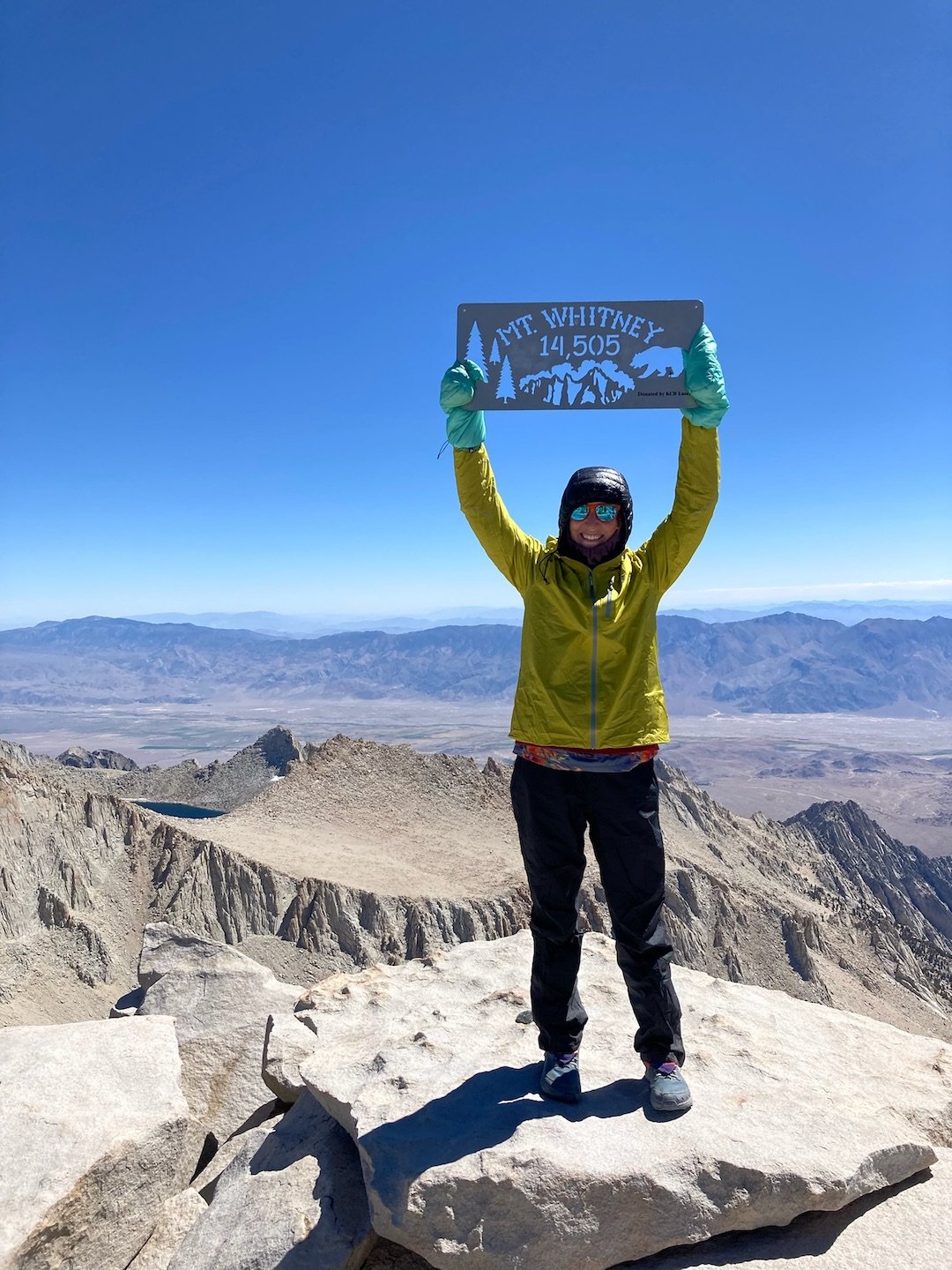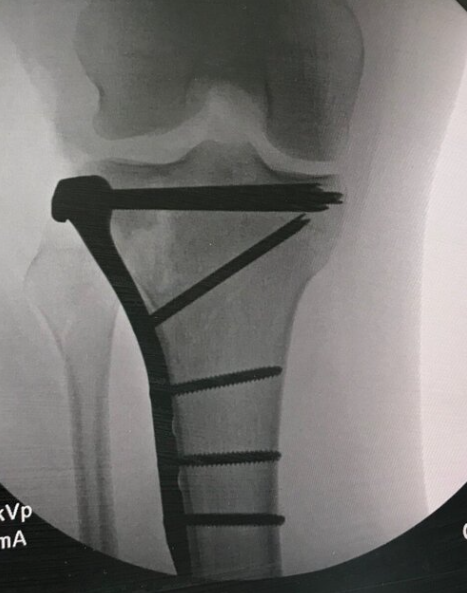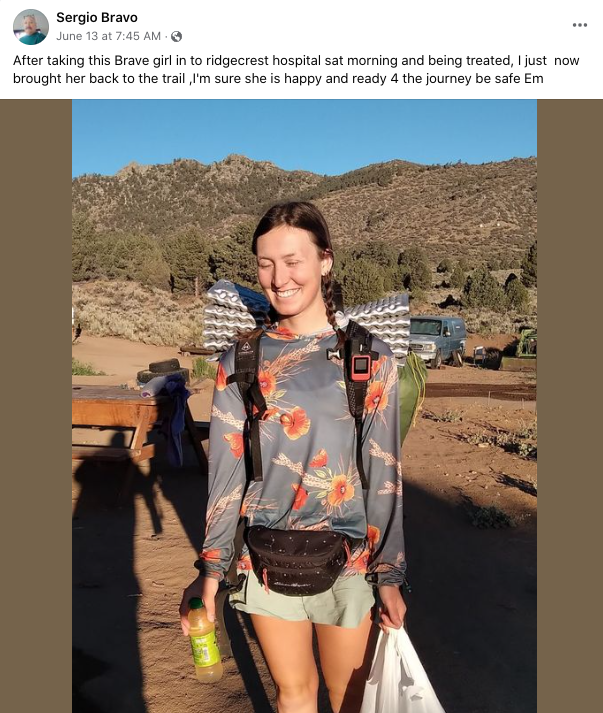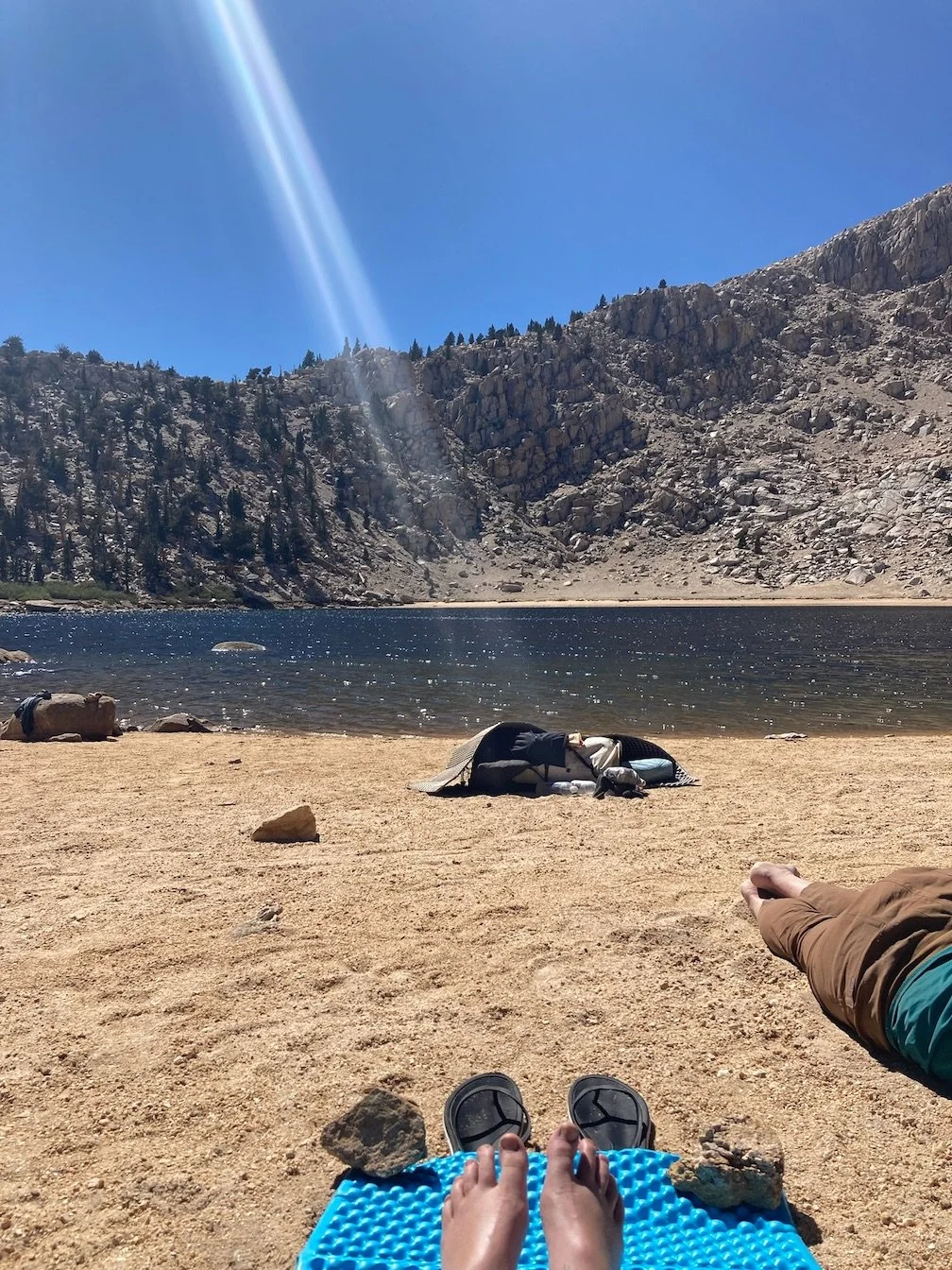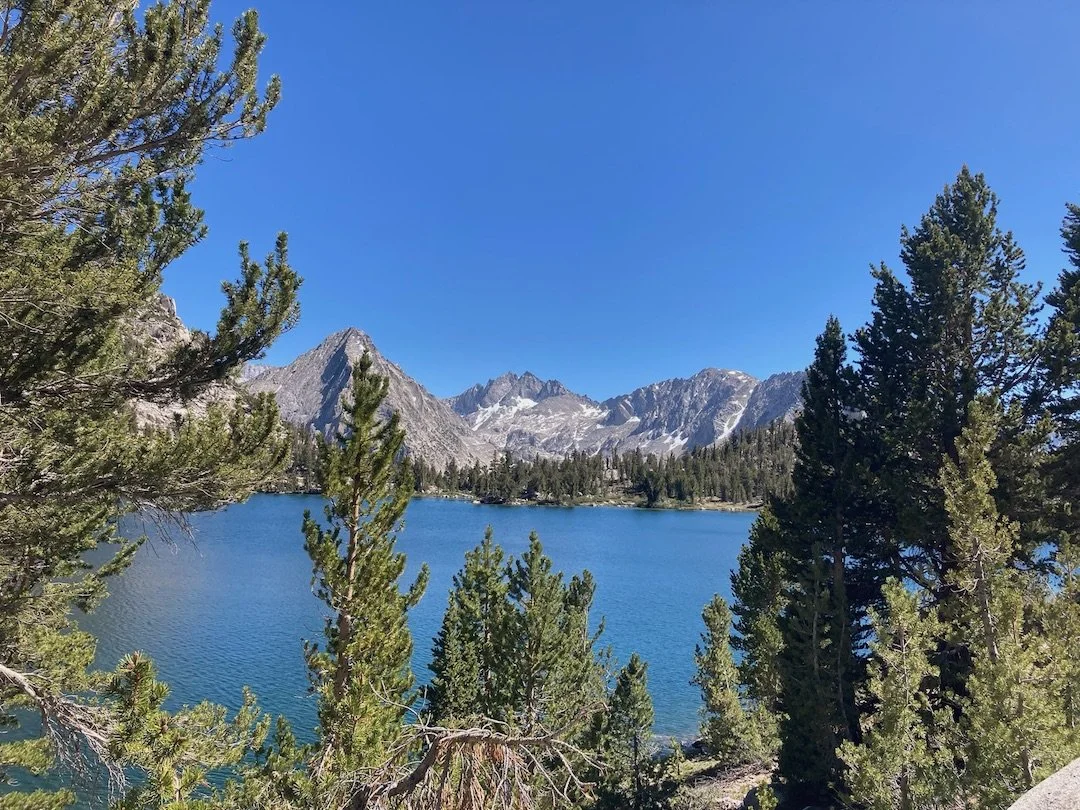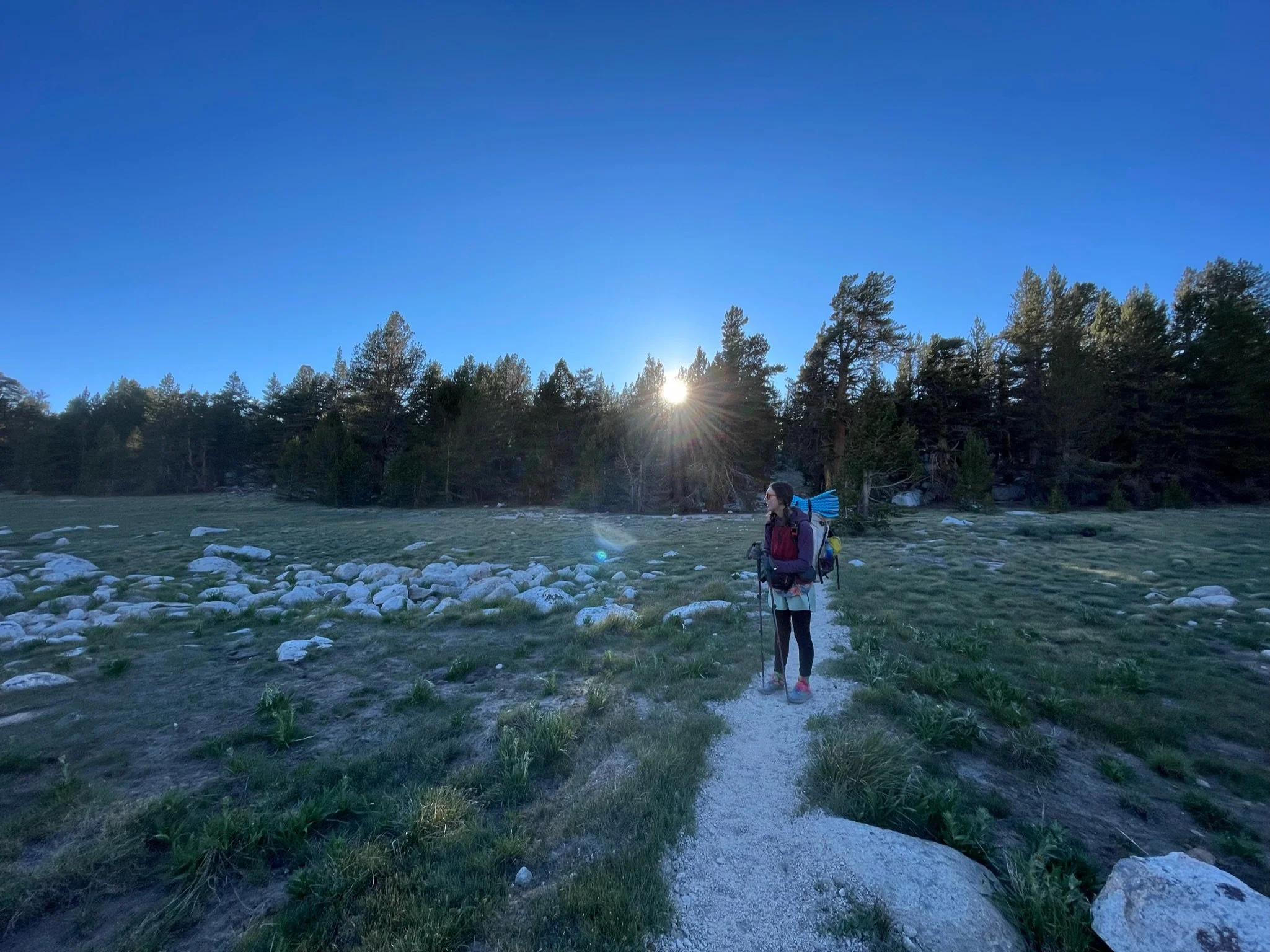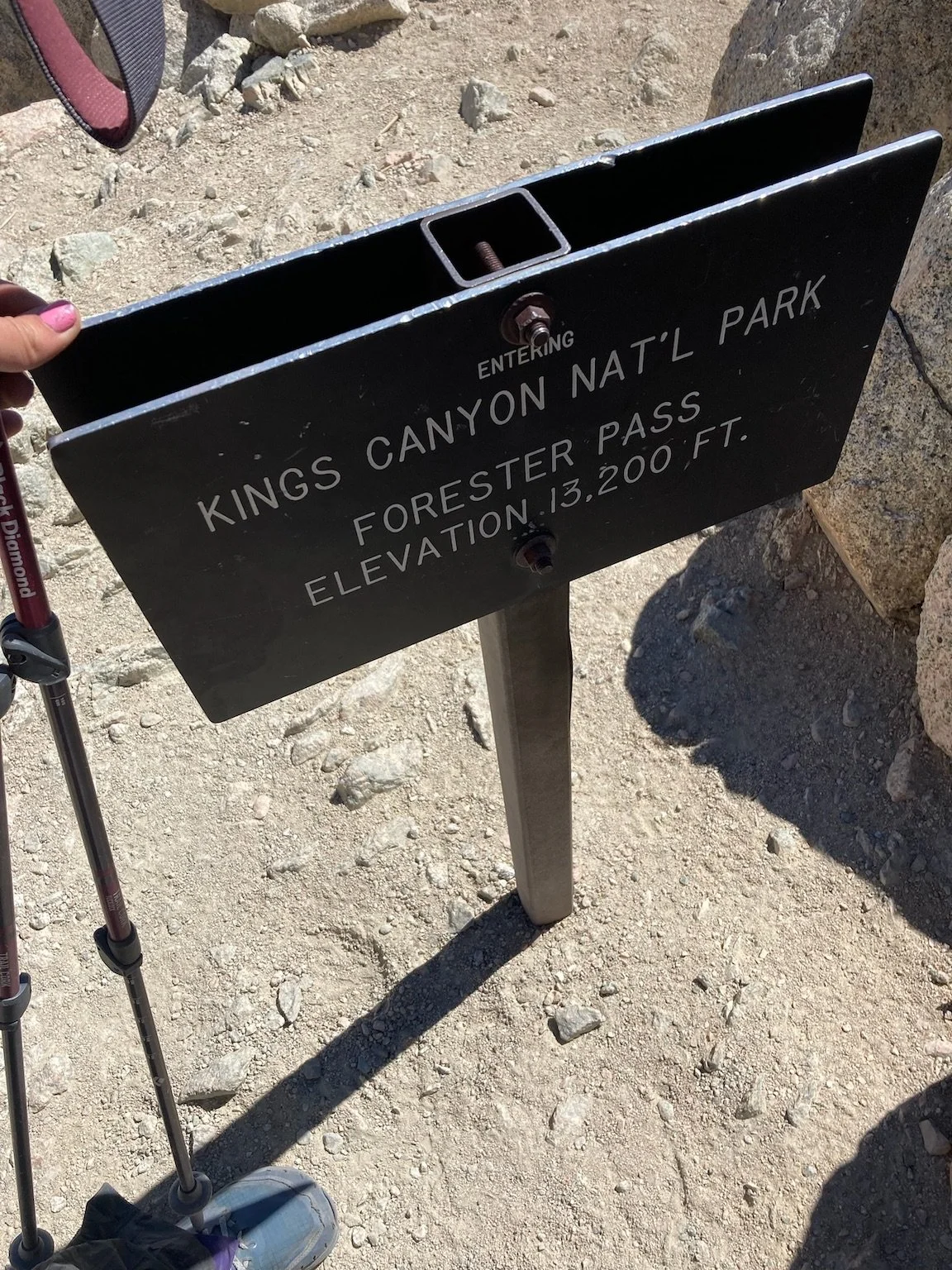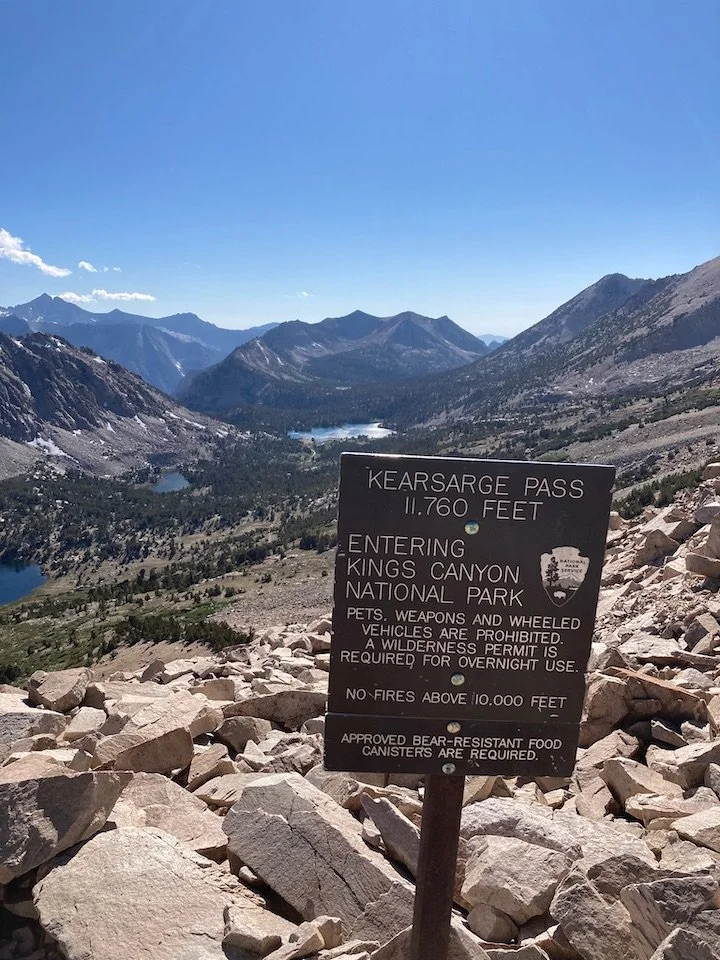The Zombie has landed; TD Grad on PCT beats dehydration, climbs Whitney
Emily Peterson made it to the top of Mt. Whitney, the highest peak in the lower 48 states with an elevation of 14, 505 ft. on Saturday, June 18. She contemplated skipping it, but it was the easier choice.
By Tom Peterson
“I got my trail name,” Emily Peterson said last week after heat and some intestinal misfiring earned her two IV drips in the hospital at Ridgewood, California.
“They’re calling me zombie because I came back from the dead.”
Emily, my daughter, who now stands at mile 788 on the Pacific Crest Trail said she ran a gauntlet of sickness and exhaustion during the past 13 days.
And equally so, the TDHS grad has gone from moments of wanting to throw in the towel to sublime peace while gazing at deep blue mountain lakes and the Sierra Mountains in California.
She set out from Tehachapi on June 7 with the hope of making the next 81 miles by Friday, June 10th.
Few watering holes and heat in the high 90s in the desert made for a pack weighing some forty pounds as she carried five liters of water. Intense sun forced early starts and afternoon siestas, and shade was sparse at best.
Here is a view of Emily’s repaired right knee after a bad mogul and then surgery in January 2020. She’s been a handful - LOL.
And worse, rumors were circling about hikers getting sick with a stomach bug.
My wife Peggy and I were about to learn how far away we really are from Emily, like talking to an astronaut orbiting the moon.
By June 10th, she had hiked 77 miles just 4 miles from Walker Pass campground, but her stomach was having no more.
She could no longer hold down food or water.
She wondered if she had caught norovirus that was rumored to be afflicting other hikers along the way.
She messaged Peggy with her inReach satellite communicator at 3:47 p.m.
There was no cell service.
“Pretty sure I got the Norovirus. Only 4 miles left until the campground but feeling pretty miserable. I don’t have any cell service,” she wrote, noting her hiker family had likely already made it to camp.
She was alone.
“Do your best Emily. I know you can do this. The heat isn't helping I'm sure,” Peggy texted back.
Tick, tick, tick.
Messaging Emily through satellite takes about four minutes to either send or receive on the device, so Peggy sent her a note to prop her up, saying her hiking buddies and support were just four miles away.
“I don’t know if I’ll make it to the campground. I can’t really stand up. I can’t keep any water down, and I keep puking, but there’s nothing left. Is there anything I can do? Or should I just lay here until it passes?”
“I'm not sure Em,” Peggy replied. “Just think about how tough you are and how you can do this. You might just need to get yourself back on the trail until you see someone for support. I wish I knew what to say. It's downhill most of the way to that campground according to the trail angel.
But yes rest until you can stand up safe. But keep yourself in view for people.”
Emily sent a message at 6:30 p.m.
“Just gotta make it down this hill. I’m having a really hard time.”
Meanwhile, Peggy was communicating with the Walker Pass Trail Angels via their Facebook page in hopes of finding a ride for her if she needed immediate care. An administrator quickly responded noting Trail Angels were at Walker Pass camp and could provide help if needed.
The seconds stretched for the next two hours as we heard nothing from Emily.
But if you have ever had the stomach flu, you know how difficult it feels to stand. Everything in your body is telling you to lay down.
Now, hike 4 miles in that condition.
“Made it to the campground,” pinged in at 8:30 p.m., and Peggy and I both exhaled.
Emily set up her tent and collapsed for the night after rejoining her hiking buddies.
Neither Peggy nor Emily got much shuteye.
“I did not sleep that whole night until we heard from her that morning at 5 a.m.,” Peggy said.
Emily messaged that she needed a doctor and was looking for a ride into Ridgecrest.
A Trail Angel appeared.
Sergio Bravo, who was stopping in at the campground to fill the water cache, drove her the 25 miles to the hospital where she received two IVs to address her dehydration and need for calories.
Health providers made no diagnosis of a virus. But blood work showed the beginnings of muscle breakdown, but at non-dangerous levels.
Whatever the cause, Emily was coming out of it.
She checked out of the hospital a couple of hours later and walked across the street to the Clarion Inn and booked two days where she spent Saturday and Sunday recuperating.
Rice and chicken soup.
Good thing, she said. It hit 110 degrees on Saturday.
Sergio Bravo
Bravo earned his wings that weekend, offering her a 48-mile ride to Kennedy Meadows where she could rejoin her pack and avoid 50 miles of the desert while she regenerated her stomach.
She rejoined her group at Grumpy Bear’s Retreat at Kennedy Meadows at the base of the Sierra on Monday, June 13.
And that was where hiker buddy, “Crocs”, a 24-year-old Whitman College Grad with a degree in chemistry quickly dubbed her “zombie.”
Zombie, Crocs and the rest of the gang set out on Tuesday, June 14th with the intent of reaching the base of Mt. Whitney - 90 miles away - by Friday, June 17.
The next three days were epic as they hiked 13- and 14-hour days and knocked out 20-plus miles a day.
And desert heat changed to mountain chill as they hiked at an average of about 10,000 feet of elevation.
Taking in Chicken Springs Lake, desert heat and dehydration in the rearview mirror. Chilly
On Thursday, they hit their first body of water - Chicken Springs Lake tucked into the decomposed granite of the Sierra and pine.
Friday ended up being a short hiking day with a 12-mile jaunt to the base of Mt. Whitney where strategies for summitting the highest mountain peak in the lower 48 states were pinned down.
They would leave the majority of their gear at the base camp and hike the 15-mile round trip with light packs - just a few pounds.
“We were thinking we would get up at 2 a.m. and be at the top to see the sunrise,” Emily said. “But people coming down said it was a white out at the top.”
Forecasts were calling for temperatures in the teens that night and strong wind.
“It’s a bad idea to hike in the dark when it is windy,” she said. “You can lose your balance especially if you cannot see.”
They pushed back the start to 5 a.m. to take advantage of the light and heat of the sun.
That evening, six of them jammed into a tent with their sleeping pads and bags and hung a phone from the tent ceiling and watched Star Wars: A New Hope.
Perhaps, a distraction. Perhaps a metaphor for the next day’s challenge.
The next morning, Emily said she balked.
“It was so cold, and I woke up and did not sleep well, and I thought I don’t know if I should do this. I did not have a lot of energy, and it was really cold.”
But the alternatives were no good.
“Packing camp is no fun,” she said. “I had prepped everything for the hike the night before, so all I had to do was step out of the tent. It was so cold going back to bed would not be comfortable. I knew if I started hiking, I would warm-up.”
So, hiking Mt. Whitney with 3,800 feet of elevation gain was the best alternative.
So, hiking Mt. Whitney with 3,800 feet of elevation gain to its 14,505-foot peak was the best alternative.
The 7.5-mile trail to the top was simpler than her ascent on Mt. Adams in 2020, she said.
No snow, no glacier and long, friendly switchbacks.
“The first 3.5 miles were pretty gradual, almost flat, and you’re hiking through a canyon, and you pass by lakes. It’s really picturesque. And it's a set of mountains, so you’re not sure what peak you are going to. You get to Guitar Lake and start doing switchbacks, and then you hit the treeline. It did not feel that physical because there is no weight on your back. It almost felt like a boost.”
Getting to the top you immediately saw this hut, and that's how you knew you were there.”
Could you see all of California?
“Kind of,” she laughed.
She and her band of hikers celebrated, took pictures and put their sleeping bags on to repel the 20-degree temperatures.
Her down foot booties covered her hands. She layered in every piece of clothing she brought.
Emily said they made the return hike to camp where she ate 1,000 calories in Velveeta and then broke camp. They hiked another 9 miles for a total of 24 miles that day.
“I got into camp at 8 p.m., and I had really cold hands - too cold to cook dinner so I ate a Snickers for dinner and went to bed.”
Forester Pass, Elev. 13,200 feet
They camped at the base of Forester Pass that evening, with the highest point on the PCT greeting them the next morning at daybreak.
It would be another 2,000 feet of gain to reach it at 13,153 feet.
She left at 7:10 a.m. with the hope of hitting Onion Valley Road to catch a hitch to Bishop at the end of the day - another 23-mile stretch.
But the elevation, cold and exhaustion had set in.
“You kind of felt trapped. The only way out was to do the hard thing,” she said. “For a day and a half, I wondered If I wanted to do this anymore.”
She said the pressure of long miles was taking its toll.
“The relief came when I got off the PCT near Bullfrog Lake near Kearsarge Pass. There was one climb 800 plus feet gained per mile. It was super steep, and I got to the top, and it was so beautiful, and you could see all these lakes, and then I just sat down, and I kind of let go of getting to town that night at an hour where I could still hitch a ride… I sat down and let it go. I’m not getting to town tonight - I decided to go as slow as I want - It got a lot better after I accepted that I would not make it. I rolled up around 6:45 p.m.”
She got a hitch to Bishop and The Hostel California, a bed, a hot meal and a shower.
Crocs and Zombie hitching a ride into Bishop after hiking some crushing elevation in the Sierra.
“The conclusion I came to after the last few days was it was just not fun,” she said. “It was so incredibly hard. But now I look back and see nothing about that was easy, even if I was healthy to start. That’s what I realized. I am glad I did it.”
Her friend, Crocs, put it simply.
“There is a lot of time to think out here,” she said. “Sometimes too much… but I feel healthier mentally and physically. I can be my best self out here. It’s not easy, but it makes you better…”

